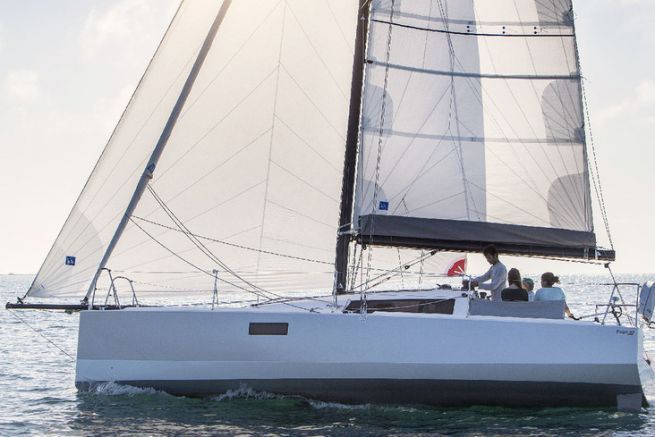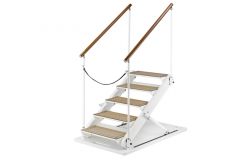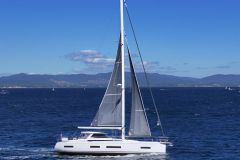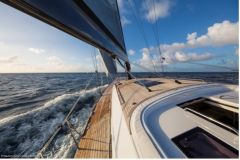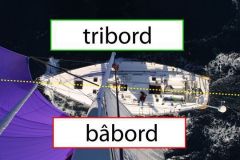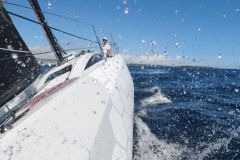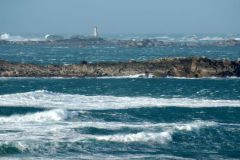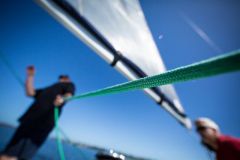Where does this Code 0? come from?
It seems that this terminology was coined during the 1998-99 Whitbread to define a flying canopy to be used upwind. There were already Codes 1, 2, 3... for sailing from full throttle to close hauled. The term Code 0 was coined to define a sail capable of sailing at tighter angles than any other flying sail.
Over the last two decades, the evolution of materials and designs has made it possible to create very specialized sails for light airs.
A large, light, free edged genoa
The Code 0 is a kind of large, very light genoa that can be sent in the manner of an asymmetrical spinnaker or as a gennaker. This sail allows to tighten the wind in very light winds. With blocked materials such as laminated fibres and a fairly flat design you will almost be able to sail upwind. On the other hand, a slightly flexible fabric and a hollow shape will not allow you to sail upwind beyond 80°.
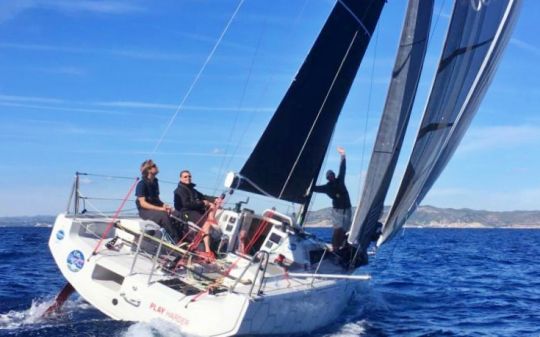
Who is the Code 0? for?
When the calm settles in, this sail is particularly useful on racing boats without a motor. However, it is gradually gaining ground on cruising yachts, which sometimes suffer from overweight and low overlapping headsails. Code 0 with furlers is becoming a relevant solution for increasing sail area in light airs.
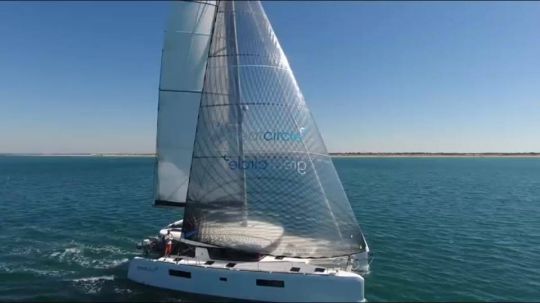
In regattas, can we use the 0? Code?
If you are a handicapped regatta sailor (IRC ORC...), you will be tempted to take such a sail on board. However, be careful with the measurements, otherwise your sail could be considered as a genoa, which would significantly increase the handicap of the boat. In IRC, the sail must be at least 75% of the edge at 50% of its height, in other words the shape is closer to an asymmetric spinnaker than to a genoa.
Can we turn around with a Code 0??
Tacking is not really the strong point of this sail, which will be more willing to gybe. However, if you wish to tack with Code 0, you will have to furl it in a large part before changing tack.
What are the criteria of qualité??
To be effective, the fabric should be "blocked" as much as possible with laminated materials. A nylon sail, such as a spinnaker, will only have a small range of use. In fact, when tacking to get closer to the wind, the leech will recede until it closes, which will then dump its wind into the mainsail... all this is not very effective.
If you are using a furling system, the quality of the anti-twist luff rope is essential to roll the sail in all circumstances. The price of the rope is often directly related to its anti-twist properties.
Some manufacturers such as All Purpose have developed Codes 0 that integrate the anti-torsion effect into their structure. This solution has already been validated on many racing boats and could soon win the pleasure boating market.
Can we keep the Code 0 in the mail and enroulé??
A Code 0 wrapped around its cable is a sail that will be quickly unfurled or stowed away. This equipment is not designed to stay in place full time. Although it is possible to keep it rigged for a few moments, it should be lowered as soon as the wind conditions cool down.

 /
/ 